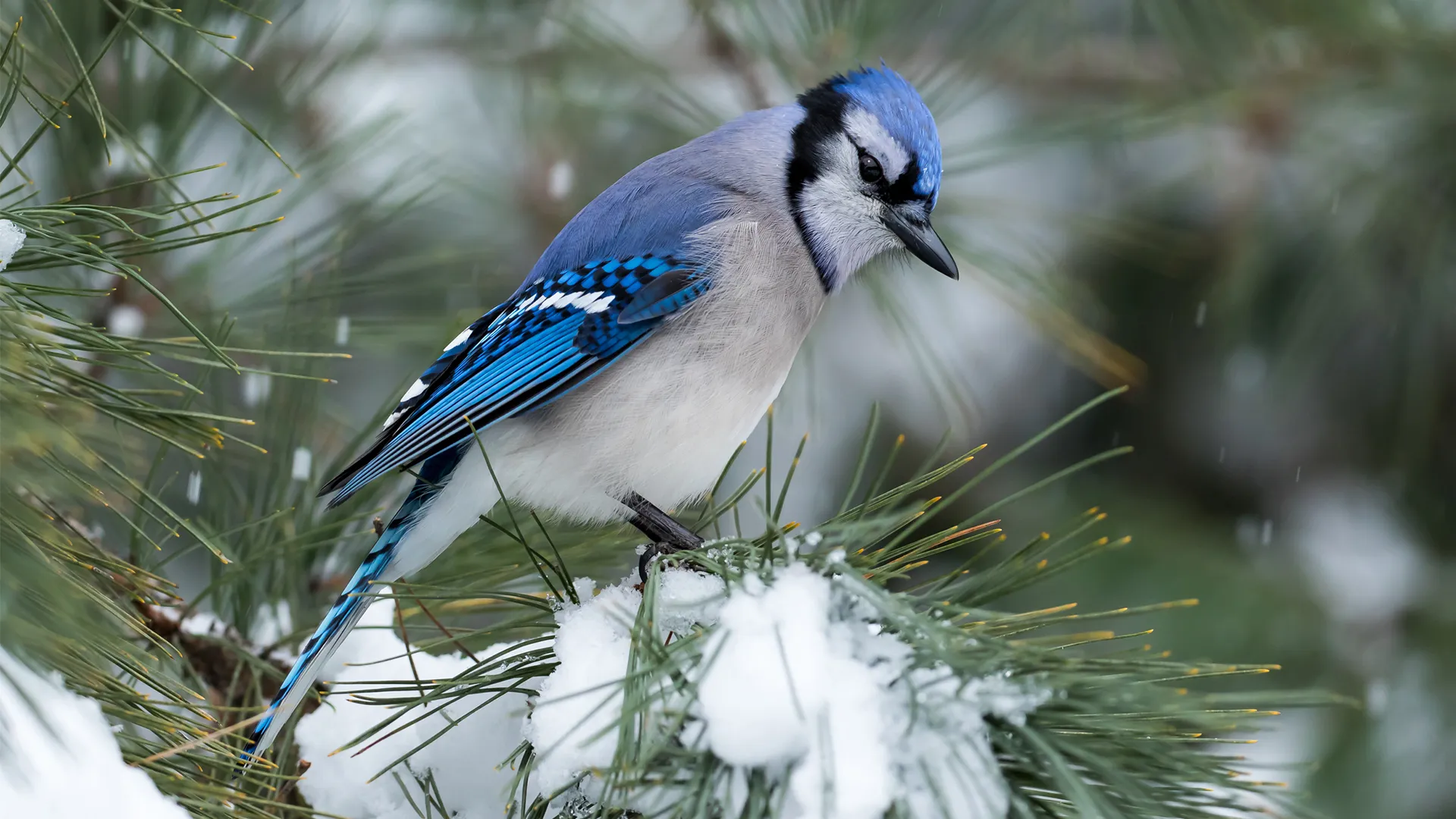If it weren’t for the pandemic, I’d be packing, getting ready to travel to Oaxaca today. Since that tour was canceled, long ago, I’m doing a bunch of Christmas Bird Counts. And if it weren’t for the rather warm and very wet weather system flowing into northwestern Oregon right now, I’d be doing the Brownsville CBC today. Late last night though, as a result of the flood warnings issued by the National Weather Service, the compiler opted to postpone it for a week, so I have a moment to blog about the CBC’s I have done so far.
The weather on both the Tangent and Roseburg CBCs was perfect, so I’m quite glad to have not been out in the rain all day today. There were very few brief breaks in the nearly constant rain here at home, and in the past 24 hours we have received 2 inches, twice as what was locally forecast. The foothills of the Cascades around the town of Crawfordsville, where I was to be, would have certainly been wetter.
Tangent, which I did on Monday, December 14, is an unofficial Christmas Bird Count – rejected because it overlaps a bit with an already-existing CBC circle. But since all the data goes into eBird and essentially the same protocols are followed, the data is just as usable as any other CBC, if not more so, considering that it’s organized by an ornithologist who is a stickler for usable bird data. If a CBC’s data is to be used to determine relative abundance and trends over time, there’s no reason why circles can’t overlap. But the CBC is largely a social event that involves some friendly competition, so this circle’s data probably won’t be useful in that regard. No matter for me, as one of the fun parts of any CBC, official or not, is that it gets you out birding in an area you wouldn’t normally think of covering. Since pandemic CBC birding has been stripped of its social aspect anyway, I’ve committed this year to merely contribute to the database.
My assigned area had two distinctive regions: the north bank of the South Santiam River opposite the town of Lebanon, which I did in the morning, and the ag fields all around Peterson Butte, famous for being the first location where Ring-necked Pheasant was released in North America. Along the Santiam I checked for river ducks, Common Goldeneye being an easy target. (No Barrows this year, though they come this far downriver only very rarely.)
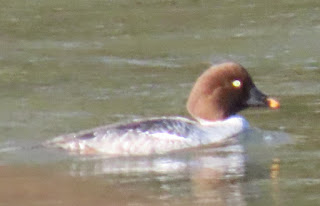
I also had plenty of Bald Eagles, but I was directly below this one before I realized it was there.
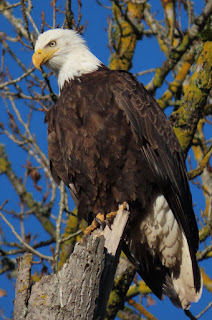
In the fields below Peterson Butte was where I was told to keep an eye out for Rough-legged Hawk, and sure enough in the afternoon I found two. This one was perched nicely next to the road.
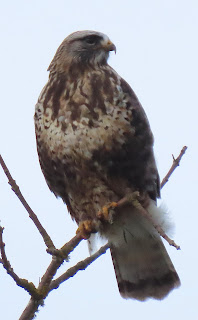
There was a good southerly breeze, and as I scoured the skies above the butte for possible Golden Eagles, I saw a bunch of paragliders and a single hang-glider above the butte and saw that they had parked their cars on a ridge by some microwave antennae. Long story short: I found the road to the top, called the number on a sign for the land manager, and got permission to enter through the gate and drive up. From there I hiked to the top, and the views of the Willamette Valley to the west were marvelous.
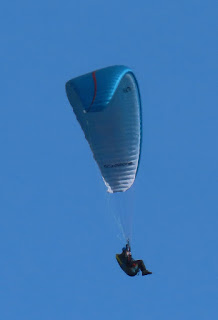
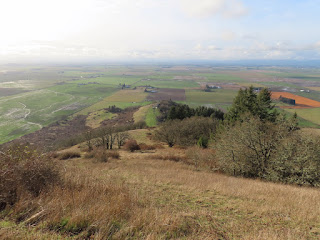
I had seen two Prairie Falcons from the base of the butte, but up here I got great views of one flying right by me, though it was tricky to photograph.
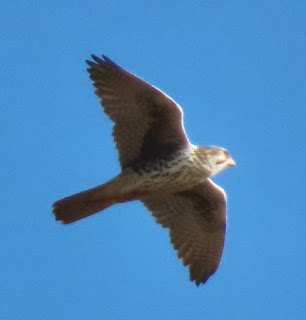
There was no sign of a Golden Eagle, but the dozens of Bald Eagles that spend the winter in the flats feeding on stillborn lambs and the abundant afterbirth were having a blast joining the paragliders. I took this photo at eye level, though the shutter wasn’t as fast would have been ideal.
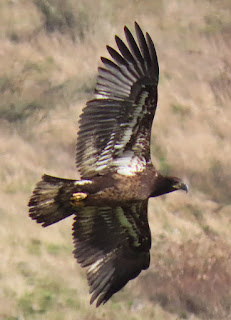
It was interesting to find Wrentits on the slopes of Peterson Butte. I had also heard some on the N side of the river in the morning. They have clearly thoroughly colonized this region, starting probably over 30 years ago, so paucity of records from the Cascade foothills to the north, in Marion, Clackamas, and Multnomah counties is very puzzling.
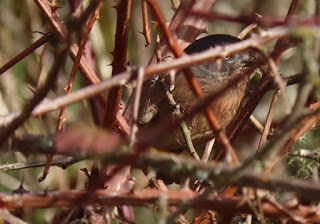
Yesterday, December 19 was the Roseburg CBC. My area was the same one I did last year in the northern part of the circle, starting at the Sutherlin exit on Interstate 5, just barely over an hour’s drive south of my home (I still have the cute little Nissan Versa that I’ve rented for a month). The highlight here is Fords Pond, an old log pond converted to a nature reserve. I started before dawn doing playback for rails and got answers from two Soras and two Virginia Rails. I wanted then to start very early on the oak hillside to the west of the lake, but on the way I heard a Swamp Sparrow calling away, a very good get for the count. I finally made it up to the top of the oaks as the sun was rising over the Cascades.
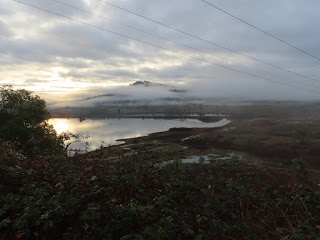
In this view, you can see the tremendous amount of habitat restoration work that is taking place: each white post is a native shrub planted in a protector in a field that last year was one massive patch of invasive blackberries. Fingers crossed they can keep it up. The Golden-crowned Sparrows certainly weren’t happy to have lost their wintering habitat, but breeding Lazuli Buntings and Chipping Sparrows will almost certainly benefit, as will any native arthropods who prefer the native vegetation.
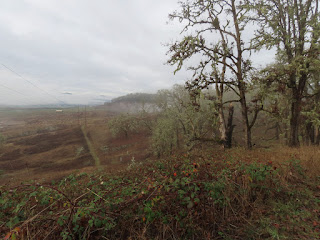
I happily entered there four Snow Geese to my list, wondering why they looked so white, but instantly dismissing it. It’s their wingtips: Snow Geese have black wingtips. The bills and legs were also maybe a bit too yellow, but I convinced myself they were actually pinkish. The bill shape was very good for Snow Goose (eliminating Ross’s), and they acted wary, moving off with wild Canada Geese as I approached. They didn’t honk like domestic geese (of which there were three on the pond). It turns out they have been here for at least two years, and so there’s something fishy about them. Note that there are also four Cackling Geese in this photo.
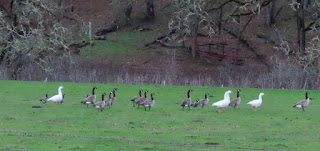
I birded a bit of some of town, and one pocket of willows and blackberries had some particularly bold birds. Wrentits are very common in this part of Oregon, near the northern limit of their historical range away from the outer coast. They love my whistled imitation.

And this Anna’s Hummingbird was convinced that my pishing was something evil that needed vanquishing.
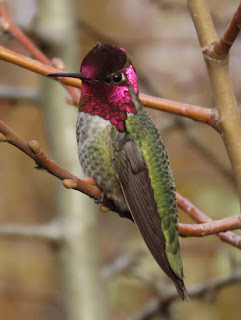
After lunchtime I birded the western part of my area, including a bit of the Umpqua River Valley at its confluence with Calapooya Creek (different that the Calapooia River that is a tributary of the Willamette). I was too slow with my camera to get a good shot of the Golden Eagle that flew right over me, but I think this one actually captured the wing shape and bill shape that distinguish it from the much more common Bald Eagle.

At Umpqua Landing I noticed a row of planted true cedars (probably Deodar Cedar) whose trunks were littered with sapsucker wells. I did a bit of playback, and immediately a Red-breasted Sapsucker appeared. These are HIS trees, and I let him have them.

Open fields near hillsides of Oregon White Oaks with mistletoe are the perfect place for Western Bluebirds. They can be surprisingly difficult to photograph well, but their blueness makes even a crappy photo like this take your breath away.
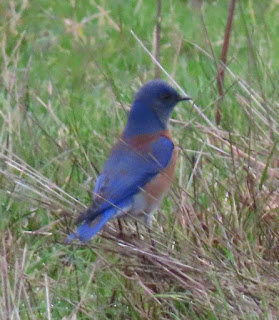
I finished the day with 92 species, sorry only that I couldn’t share it with anyone at the time. Next year…

